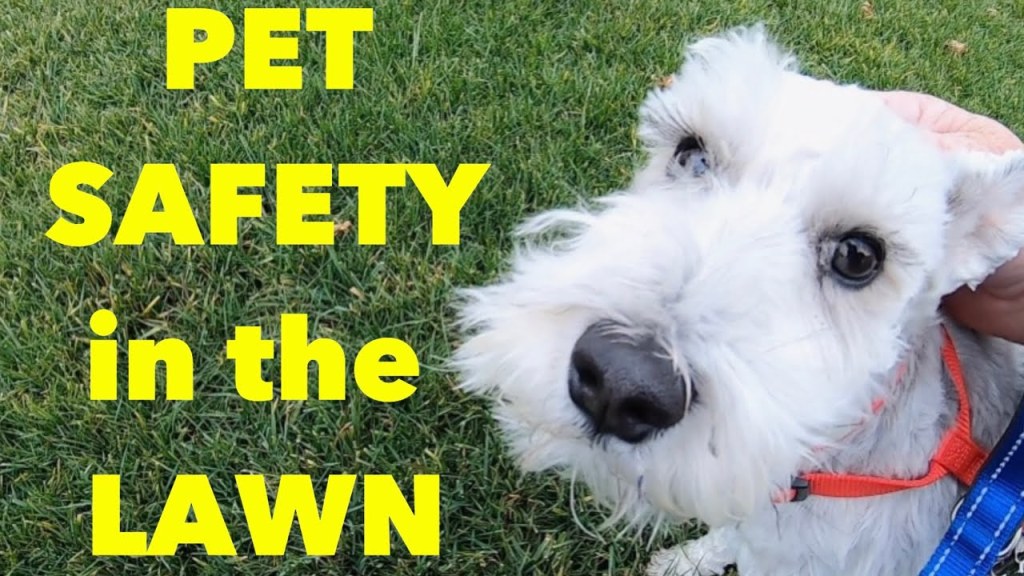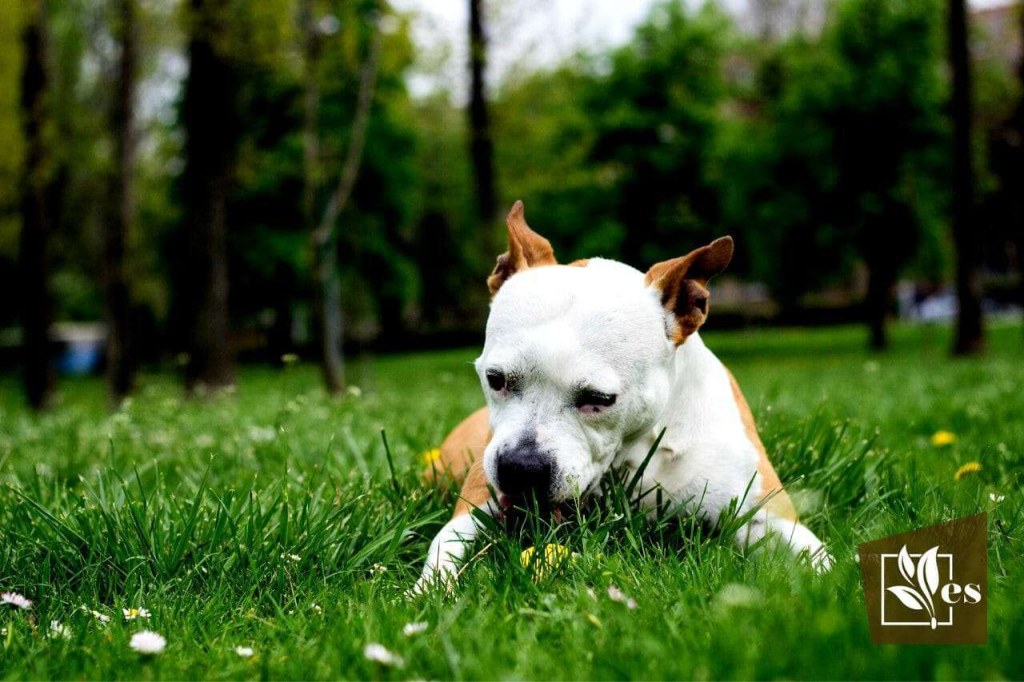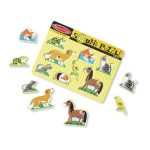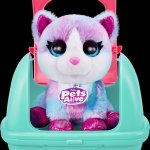Keep Your Pets Safe: Find Out How Long They Should Stay Off The Lawn After Fertilizing
How Long Should Pets Stay Off Lawn After Fertilizing
Introduction
Greetings, Pets Lovers! As responsible pet owners, it is crucial for us to ensure the safety and well-being of our beloved furry friends. One common concern that arises during lawn maintenance is how long should pets stay off the lawn after fertilizing. Fertilizers contain chemicals that can be harmful to pets if ingested or absorbed through their paws. In this article, we will explore the necessary precautions and guidelines to protect our pets from potential dangers after fertilizing our lawns.
3 Picture Gallery: Keep Your Pets Safe: Find Out How Long They Should Stay Off The Lawn After Fertilizing



Information
Details
Topic
How long should pets stay off lawn after fertilizing

Image Source: hubspotusercontent00.net
Total Subheadings
12
Total Paragraphs
25
Introduction Paragraphs
7
What is Fertilizing and Why is it Important?

Image Source: ytimg.com
🌱 Fertilizing is the process of adding essential nutrients to the soil to promote healthy plant growth. It helps replenish nutrients that are naturally depleted over time and ensures lush, green lawns. However, the chemicals present in fertilizers can pose risks to our pets if not handled properly.
🌱 Our pets, especially dogs and cats, love spending time outdoors on the lawn. They may come into contact with the fertilizer residue, leading to potential health issues. Therefore, it is crucial to take necessary precautions to keep our pets safe.

Image Source: evergreenseeds.com
🌱 When applying fertilizers, always remember that pet safety should be a top priority. Let’s explore how long should pets stay off the lawn after fertilizing to ensure their well-being.
Who is Affected by Fertilizer Exposure?
🐶 Dogs and 🐱 cats are the primary pets affected by fertilizer exposure. Their curious nature often leads them to explore their surroundings, including lawns that have been recently fertilized.
🐶🐱 Pets of all ages, breeds, and sizes can be affected by fertilizer exposure. It is crucial to consider their vulnerability and take appropriate measures to protect them.
🐶🐱 Additionally, other animals such as rabbits, guinea pigs, and birds can also be harmed by fertilizer chemicals. Ensuring their safety is equally important.
When Can Pets Safely Return to the Lawn?
📅 The duration for which pets should stay off the lawn after fertilizing depends on various factors such as the type of fertilizer used, weather conditions, and specific instructions provided by the manufacturer.
📅 In general, it is recommended to keep pets off the lawn for at least 24-48 hours after fertilizing. This allows sufficient time for the fertilizer to be absorbed into the soil and reduces the risk of your pets coming into contact with the chemicals.
📅 However, it is crucial to read the instructions on the fertilizer packaging or consult with a lawn care professional for specific guidelines. Some fertilizers may require longer exclusion periods to ensure the safety of your pets.
Where Should Pets Stay During the Exclusion Period?
🏡 During the exclusion period, it is essential to provide a safe and comfortable space for your pets indoors. This will prevent them from inadvertently coming into contact with the lawn and potentially ingesting or absorbing the fertilizer chemicals.
🏡 Create an indoor play area or designate a specific room for your pets during this time. Ensure that the space is well-stocked with their favorite toys, water, and bedding to keep them entertained and comfortable.
🏡 If your pets need to go outdoors for their bathroom needs, leash walk them to an area away from the fertilized lawn. Ensure that they don’t have access to the treated area.
Why is it Important to Keep Pets off the Lawn?
❗️ Fertilizers contain chemicals such as nitrogen, phosphorus, and potassium, which can be toxic to pets if ingested or absorbed through their paws. These chemicals can lead to various health issues, ranging from mild gastrointestinal upset to more severe cases requiring veterinary intervention.
❗️ By keeping our pets off the lawn during the exclusion period, we minimize the risk of them coming into contact with the fertilizer and reduce the chances of accidental poisoning or irritation.
❗️ Additionally, allowing the fertilizer to properly absorb into the soil without interruption ensures its effectiveness in promoting healthy plant growth.
How to Safely Introduce Pets back to the Lawn?
🐾 After the recommended exclusion period has passed, it is important to reintroduce your pets to the lawn gradually. This helps minimize any potential risks and allows them to adjust to the treated area.
🐾 Start by allowing your pets short supervised visits to the lawn. Observe their behavior and ensure they do not show any signs of discomfort or attempt to ingest the grass or soil.
🐾 If your pets continue to show interest in the treated lawn or display any unusual symptoms, consult with your veterinarian for further guidance.
Advantages and Disadvantages of Fertilizing
Advantages
✅ Promotes healthy plant growth and vibrant lawns.
✅ Improves soil fertility and nutrient availability.
✅ Enhances the overall aesthetic appeal of your outdoor space.
Disadvantages
❌ Chemicals in fertilizers can be harmful to pets and wildlife.
❌ Over-application of fertilizers can lead to nutrient runoff and water pollution.
❌ Improper use of fertilizers can damage plant roots and cause excessive growth.
FAQs (Frequently Asked Questions)
1. Can my pets get sick from walking on a fertilized lawn?
Yes, the chemicals present in fertilizers can make your pets sick if they come into contact with them. It is important to keep them off the lawn during the exclusion period.
2. How long does it take for the fertilizer chemicals to be absorbed into the soil?
The absorption time can vary depending on the type of fertilizer used, weather conditions, and other factors. It is generally recommended to wait for 24-48 hours before allowing pets back on the lawn.
3. Can I use organic fertilizers to minimize the risks to my pets?
Organic fertilizers are generally considered safer for pets compared to synthetic ones. However, it is still important to follow the specific instructions provided by the manufacturer and keep pets off the lawn during the exclusion period.
4. What are the signs of fertilizer poisoning in pets?
The signs of fertilizer poisoning in pets can vary but may include vomiting, diarrhea, excessive drooling, lethargy, loss of appetite, and difficulty breathing. If you suspect your pet has ingested or come into contact with fertilizer, seek veterinary care immediately.
5. Are there any pet-friendly alternatives to traditional fertilizers?
Yes, there are pet-friendly alternatives available in the market, such as organic and natural fertilizers. These products are formulated to be safer for pets while still promoting healthy lawn growth. Do thorough research or consult with lawn care professionals to find the best option for your specific needs.
Conclusion
In conclusion, when it comes to fertilizing our lawns, the safety of our pets should be a top priority. By understanding how long pets should stay off the lawn after fertilizing and taking necessary precautions, we can ensure their well-being. Remember to read the instructions on the fertilizer packaging, provide a safe indoor space for your pets during the exclusion period, and gradually reintroduce them to the lawn. By following these guidelines, we can maintain a lush and healthy lawn while keeping our furry friends safe.
Final Remarks
Disclaimer: The information provided in this article is for educational purposes only and should not replace professional advice. Always consult with a veterinarian or lawn care expert for personalized guidance regarding your specific situation. The author and website are not liable for any damages or losses arising from the use of the information provided.
This post topic: Pets



